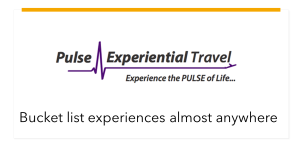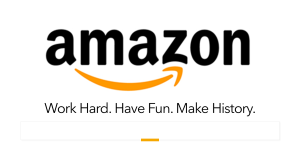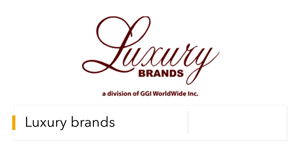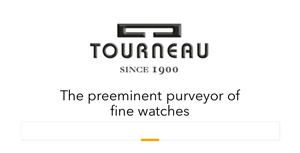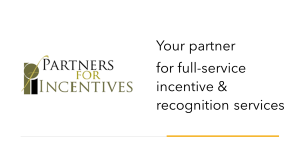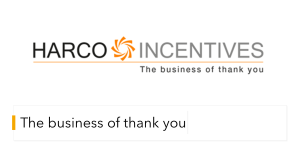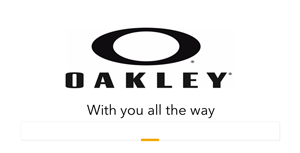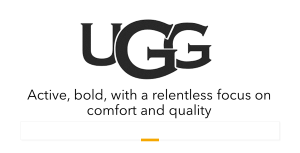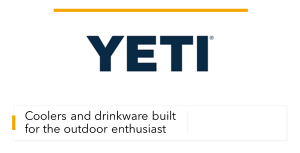IRR Industry Report: Challenges and Opportunities for 2022 and What We Can Learn from the Past
These insights and suggestions are timed not only to outline the unprecedented opportunities for our times but to provide perspectives for industry leaders planning the focus of their associations or businesses in 2022. This report comes from someone who has been part of or observed almost every major initiative in this field since 1989—a span of 32 years. I joined the industry as editor of Incentive Marketing magazine in 1987 and became publisher of the renamed Incentive magazine--managing and marketing through motivation--before launching my company’s media properties RRN and ESM in 1996 and 2008 respectively.
By Bruce Bolger
- What the Future Looks Like for Organizations That Act
- What We Can Learn from Industry Forebears
- What’s at Risk for the IRR Industry? Nothing But Success
 As much as the IRR industry used to complain about the lack of visibility or respect for the field in the C-suite and academic circles when I first became involved during the 1980s, anyone still active knows the industry is a mere shadow of its former self. During a time when the industry leaders of the 1990s and 2000s would have pounced on the scale of the opportunity being presented by the human capital management movement, Stakeholder Capitalism (aka Environmental, Social, Governance--ESG), the IRR industry continues to mostly double-down on a narrower focus on rewards and recognition an earlier generation knew would never get them to the C-suite.
As much as the IRR industry used to complain about the lack of visibility or respect for the field in the C-suite and academic circles when I first became involved during the 1980s, anyone still active knows the industry is a mere shadow of its former self. During a time when the industry leaders of the 1990s and 2000s would have pounced on the scale of the opportunity being presented by the human capital management movement, Stakeholder Capitalism (aka Environmental, Social, Governance--ESG), the IRR industry continues to mostly double-down on a narrower focus on rewards and recognition an earlier generation knew would never get them to the C-suite.
This column is not about an industry veteran glorifying the old days, it’s insight from someone who knows what’s possible. Yes, being 20 years ahead of one’s time is bad for business and one’s brand, but I have put my money where my mouth is. I am doubling down on the Enterprise Engagement Alliance’s commitment to help organizations profit by creating better returns for shareholders by creating more value for customers, employees, supply chain and distribution partners, and communities.
What the industry leaders of the 1990s and 2000s could only dream of has come to pass: a growing awareness at the highest levels of business and even government of the critical focus of people as an asset rather than a sunk cost.
What the Future Looks Like for Organizations That Act
Before sharing the history that points to what this industry can once again achieve, here are the
opportunities that await every company and organization that seizes the opportunity and equips itself for the future.
1. The potential to have board, C-suite impact. For the first time, based on the intense interest on the topic of human capital management coming from investors, there is an opportunity to establish this field as a critical part of an overall organizational strategy. The Incentive Research Foundation and others have provided the research and academic network to once and for all get to the C-suite with a serious business proposition that properly designed incentive programs can make an important contribution to corporate strategy.
What are the incentive, recognition, loyalty companies and associations doing to get to the C-suites? Do our salespeople and program designers have serious training in human capital management, reporting, return-on-investment measurement to make a serious case to the C-suite for an industry that has focused mostly on selling prizes? Is all the industry research being applied?
The opportunity for solution providers is a new source of revenues through professional services fees, pay-upon-performance instead of reward redemptions fees, and sale of related engagement services and technologies beyond rewards, such as technologies, employee benefits, assessment and feedback systems, culture, innovation, analytics, etc. For the first time, organizations are increasingly receptive to ROI.
Organizations such as the Conference Board, World Economic Forum, Economics of Mutuality, and many more are holding conferences on human capital management and stakeholder engagement. Is the IRR field part of that dialog at any level?
The EEA YouTube channel has multiple high-level shows on C-suite issues to train you and your teams human capital management, Enterprise Engagement, and Stakeholder Capitalism issues.
2. Recognize the significance of human capital or ESG reporting. The Securities & Exchange Commission is likely to do what many in the industry in the 1990s would have enthusiastically supported: the requirement that public companies disclose not only information on human capital “material” to their business but specific practices and metrics, including employee engagement, turnover, wellness and safety, diversity.
This is a golden opportunity for the IRR field: help organizations strategically and systematically address the cultural, engagement, learning, and related people issues related to a formal human capital management plan.
The EEA provides a complete information center for companies seeking to apply a strategic and systematic approach to human capital, including a free information center and gap analysis checklist.
The EEA human capital management framework is being used in the 2021-2022 by investors in proxy discussions with publicly held companies.
The EEA human capital management framework is being used in the 2021-2022 by investors in proxy discussions with publicly held companies.
3. The power of selling brand stories, not carrots and prizes. Despite the research from the IRF and other sources underlining the importance of the brand experience, the presentation experience, and the power of brand storytelling and brand affiliation, the IRR field continues to sell products with a focus on prizes instead of emotions and brand engagement. To do these programs justice, solution providers should be experts in brands the way ad agencies are about media. The industry can do much more to educate brand executives on the size and significance of this field so they support it as they once did in the past.
The EEA’s Brand Media Coalition has a complete free reference center on the power of brands and how to effectively maximize their impact in almost any type of engagement effort.
4. The importance of elevating face-to-face and video experiences. This is the opportunity the industry has waited for to de-commoditize the motivational events business once and for all. There should be no going back to the canned conference approaches of keynotes and panels that work just fine on video meetings. Face-to-face events now should focus on maximizing the amount of time people spend with one another and with experts to learn and experience collaboratively. Live events will be increasingly supported with video programming of television production values, so people back home want to flip on their computers to participate. The days of travel agents handling experiential events for business are gone.
Click here for an EEA Tactical YouTube show on the new approach to motivational events in the era of Covid.
5. The vast potential of enterprise engagement technologies—the CRM (customer relationship management) for the new workplace. No one wants an “HR stack.” We want seamless smartphone experiences. The technologies exist today to lay a cable into hearts and minds of every employee and contractor (and customer, for that matter) to seamlessly align assessment, learning, communications, collaboration, innovation, health and wellness, social recognition, rewards, and actual behavior- and information-based performance appraisal data, etc. The bulk of those incentive and recognition companies that invested in their own technologies will eventually regret it for the same reason few companies use their own CRM platforms today. The emphasis should be on helping companies select the right technologies for their business and then choreographing the strategies, assessment, content and communications, social recognition, rewards, and other engagement elements appropriate to the goals.
Click here to see the features of already existing technology to fully align all engagement activities.
6. The need to establish a new distribution channel. The incentive, recognition, and loyalty companies scurrying to hire people will soon discover the challenges of achieving an ROI. The level of salesperson required to conduct serious discovery conversations with senior management costs well into the six figures, and slow sales cycles make it difficult to achieve an ROI. The industry needs to find a new source of distribution and the most likely source are the top tier promotional distributors who already are expanding their services to create more value for customers, as well as HR advisory and marketing firms.
The EEA’s Brand Media Coalition is working with EME Events to develop a new education and communication program for the top 5% of distributors. Click here for details.
7. The opportunity to create an inspiring field that attracts young blood. Have you ever heard of students clamoring to work for incentive and recognition companies? The IRR field has a story that could appeal to young people if it identifies a meaningful way to get that story into higher level education. Properly positioned, incentive and recognition companies should be viewed as great places to work, where one can make a difference. There’s an opportunity to create a new type of agency that young people clamor to work for focused on supporting Stakeholder Capitalism and the principles of ESG.
The EEA has created the Stakeholder Capitalism Society to engage students in the evaluation of human capital reporting by public companies.
8. Attracting venture capital for the right purposes. It’s exciting to see venture capital flowing into the IRR field again, but sad to see it doubling down on the same old focus on rewards. All the biggest players in the space are about developing new ways to deliver awards when the true opportunity is to help organizations better engage and align all their stakeholders.
The EEA’s Engagement Agency has a mergers and acquisition group specifically focused on the engagement space and companies seeking to buy or sell people-focused enterprises.
9. Collaboration to seize the day. The task of elevating the strategic importance of people in the C-suite; the importance of brands as an engagement tactic; the broader issue of educating senior management and our own practitioners on the skills they need to prepare this new future can only be accelerated through collaborative action.
Over the last year, the EEA has worked with organizations such as the Conference Board, CEO Action for Racial Equity and Inclusion, and chambers of commerce, including Manchester, NH.
What We Can Learn From IRR Industry Forebears
For the younger generation who do not know what’s possible, here’s a brief history of the field from the 1990s to 2000s, and which suggests the potential opportunities if this industry’s leaders yet again seize the day.
1. The benefits of C-suite engagement. The industry association boards at the time consisted of presidents and senior executives of the member companies, including many leading brands, who made significant financial commitments year after year for research and education. The brands who participated had in many cases vice president-level management running their divisions. This is now rare.
2. Thousands of engaged non-hosted buyers attended industry events. At their peaks in the 1990s and 2000s, the two major industry trade shows had combined nearly 6,000 actual attendees combined, including all almost all the industry presidents and many end-users. Few if any buyers were hosted; many paid extra for education. Today, almost all the major events are hosted.
3. Learning from outside speakers. The industry events always sought outside expert speakers representing leading end-users or other experts—a star speaker was considered a major end-user providing a case study or perhaps a university professor or other business expert sharing research, not a motivational speaker with little relevance to our field or relying industry insiders. Each year the solution providers paid for bringing their teams in for training by the hundreds, counting both shows.
4. A focus on program design performance, not rewards. The industry religiously highlighted “motivation” in its marketing message, not prizes. Long departed George Meredith’s classic book on the field, “Incentives in Marketing,” focused heavily on the importance of program design and selective reward usage. It’s among the most significant works I’ve seen in the field as relevant today as ever. Minus any reference to any of the technology we now take for granted, much of the wisdom he provides remains rarely applied by corporations still more interested in bright shiny objects than serious people-centric solutions.
5. Effective government lobbying. The industry engaged a lobbying group under the able direction at the time by George Delta under the aegis of the Incentive Federation that helped create in the 1990s a long-standing federal tax incentive for safety and employee achieve programs some of which endures today. Today, there should be tax incentives for companies that invest in people as there is for other capital investments.
6. An annual industry census. The industry conducted an annual industry research for decades that was frequently referenced in the national media until its demise after the Great Recession and the collapse of The Motivation Show, which helped fund it. George Meredith, who helped create that research each year, once told me the industry would fall off the map without that annual survey: Prophetic words.
7. An early commitment by industry leaders to objective research. The 1990s period gave birth to the SITE Foundation, which became the Incentive Research Foundation. As one of the earliest presidents, I can personally state the IRF has fulfilled the expectations of its founders. At the time when I served, all the board members were the presidents (with the exception of me) of the leading incentive and travel players in the field.
These leaders funded the far-reaching work that would establish the circumstances under which properly designed incentive programs can serve as a powerful ROI-based strategy while identifying the pitfalls, including: “Incentives, Motivation and Workplace Performance,” and the Master Measurement Model of Employee Performance, both originally published in the 1990s. For no other reason than lack of interest by end-users, these remain among the industry’s best kept secrets for those ready to get serious about effective practices.
Not once did anyone on the boards I served on push to move the needle in research in favor of cash or non-cash awards. The IRF research in the 2010s eventually dispelled the simplistic slogan used by the industry during the last century that people preferred non-cash to cash rewards, but found rather that non-cash rewards, when selected and used in properly designed programs, could have much more lasting impact on performance and attitudes than cash awards alone.
8. Educational outreach. The Incentive Marketing Association at the time had an ongoing education outreach program at universities and colleges specifically to educate college students on the field before they entered the workforce. Members, including myself and many others, donated our time and expenses to participate using the curriculum developed at the time by George Meredith and later Incentive magazine.
9. Results-Based Program Design. In the late 1990s, the IMA published the original Incentive Professional curriculum, co-authored by myself and Rodger Stotz, formerly of Maritz and the IRF. With the help of David Chrisman, it was the industry’s first attempt at a formal curriculum since the work of George Meredith, with over 160 pages of detailed information that focused on program design, ROI methods. It drew upon the Master Measurement Model (created by what is now known as the IRF) to address the alignment of engagement tactics, strategic selection of awards, and much more. I’m the first to admit that the practices contained in this program remain rarely used due to the lack of focus on ROI among organizations that use incentive programs.
10. Elevating the impact and brand of the field throughout the world with the help of Northwestern University. Backed by the unparalleled generosity of Peter Erickson of The Motivation Show in about 1999, the presidents of about a dozen leading incentive and recognition companies each paid $10,000 a year for nearly a decade to support the Forum for People Performance Management and Measurement at the Medill School at Northwestern University. It’s seminal research on engagement across the enterprise helped create the implementation framework to support what is now known as Stakeholder Capitalism, Stakeholder Management, or Enterprise Engagement. Its work independently verified the parallel work being done in the domain of Stakeholder Management, pioneered by R. Edward Freeman, Professor, Business Administration, Darden School at the University of Virginia. For many years, the presidents of the founding organizations attended all the board meetings, until its demise in the early 2010s, supporting serious research from which mine and many other companies will benefit.
11. Using great experiences to convert the skeptical about the impact of motivational events. At the industry’s annual events, sponsors stepped up to demonstrate how experiences could go to the next level to create unforgettable impact. Those of us who experienced the industry shows and evening events of the 1990s in New York, Chicago, Vienna, London, know first-hand the power of experiences from those events. They weren’t just boondoggles—they showed what was possible to do when you bring people together to get to know one another, rather than to get lectured to or inspired from a stage or now a video screen.
I personally witnessed the impact when we engaged consultants from the American Productivity and Quality Center to help develop the Master Measurement Model for performance measurement. We were invited to present the program in the Netherlands with a group of incentive company management and end-user management, hosted by the Netherlands and local tourist boards that competed to dazzle the participants during the three-day program.
Engineers and educators by training, the two executives from the APQC at one point pulled me aside during one of the evening experiences, in this case at a medieval castle set up as it might have been during its era, music and menu and all. In effect, the told, me: “We were frankly very skeptical about this sort of thing. We thought of trips like these as boondoggles. We can now see that if the right people go for the right reasons, we can see why such experiences could have a lasting impact.”
What’s at Risk for the IRR Industry? Nothing but Success
The IRR business is booming. Organizations are gifting like never; people are itching to travel, and companies are eager to please. If the world were like yester-year, the industry would ride another wave of gifting and travel and then eventually it would die down.
Read the Linked in posts and web sites of almost every incentive, recognition, and loyalty company, and it’s clear the industry is looking to profit from what companies are buying right now without looking at what could be different this time around. Almost without exception, the industry web sites generally reflect the same collection of unsubstantiated claims about motivation and engagement with little if any specificity about ROI, solutions to the Great Resignation, declining customer engagement, etc.
Why? Because their customers aren’t asking for it. The culture of this field is to follow the customer and because the customer tends to be on the lower-level management side often overseeing budgets that receive little CEO scrutiny, the industry often responds to the lowest common denominator request and is lured into thinking that’s what the market wants. Somehow, the reward technology company Awardco was able to achieve a $900 million valuation on the promise it could provide Amazon Business awards at cost, with only vague claims about how it helps organizations enhance performance with a clear ROI. (Expect these newly funded companies to start hiring “organizational psychologists” or other professionals to address this flaw.)
What’s different this time around? Investor, board, and CEO scrutiny is what’s different. In the past, we couldn’t measure the ROI of people activities, so employee engagement efforts generally remain viewed as “sunk” costs without serious efforts to measure them. Failure to do so in this era of analytics borders on irresponsible. What is a motivational speaker really accomplishing for our business? What benefits are coming from this trade show? How is the social media program helping our business? How is that incentive trip truly driving results after all?
Change takes time in business but what makes sense eventually happens. This year the light bulbs are going off in the C-suite to ask smarter questions, and this in turn has begun a process we already know is underway among lower-level management asking more questions about data and results from their vendors. But that’s just the start. When organizations recognize that their stakeholders are in effect their brand, not a byproduct of it, all sorts of new attention will go into more seriously managing that asset.
The current IRR model might have another one-year run--until warning lights begin to flash at companies when salespeople start coming to their managers saying, “The client wants to see how what we are doing is driving their strategic plans. Do we have any case studies on how we helped an organization transform its culture? They want to know what sorts of ROI metrics we use and understand how we can support their other efforts to drive performance. What is the level of engagement of our various audiences in our various efforts? They want to know the strategy behind the types of reward structures we use and why we use one product over another, etc.”
The risk of waiting to react. Solution providers can’t fake this expertise or whip up a “deck” or add another tab to their web sites and expect to effectively compete.
For many, the worst risk of all is missing perhaps the biggest wave the industry ever dreamed of.
Education, Certifications, and Information to Activate
Brand Media and Enterprise Engagement
A complete learning, certification, and information program and a course syllabus for educators.
Resources: The Brand Media Coalition, the only guide to the story-telling power of brands and where to source them for business, event, promotional gifting, and rewards and recognition. Enterprise Engagement Solution Provider Directory. The only directory of engagement solution providers covering all types of agencies and tactics as well as insights on how to select them.
Communities: The Enterprise Engagement Alliance and Advocate and the Brand Media Coalition free resource centers offering access to the latest research, news, and case studies; discounts, promotions, referrals, and commissions, when appropriate to third-party solution providers from participating coalition solution provider members.
Training and Certification
Enterprise Engagement Alliance Education: Certified Engagement Practitioner; Advanced Engaged Practitioner, and Certified Engagement Solution Provider learning and certification programs on how to implement Stakeholder Capitalism principles at the tactical level.
International Center for Enterprise Engagement: The only training and certification program for ISO 30414 human capital reporting and ISO 10018 quality people management certification.
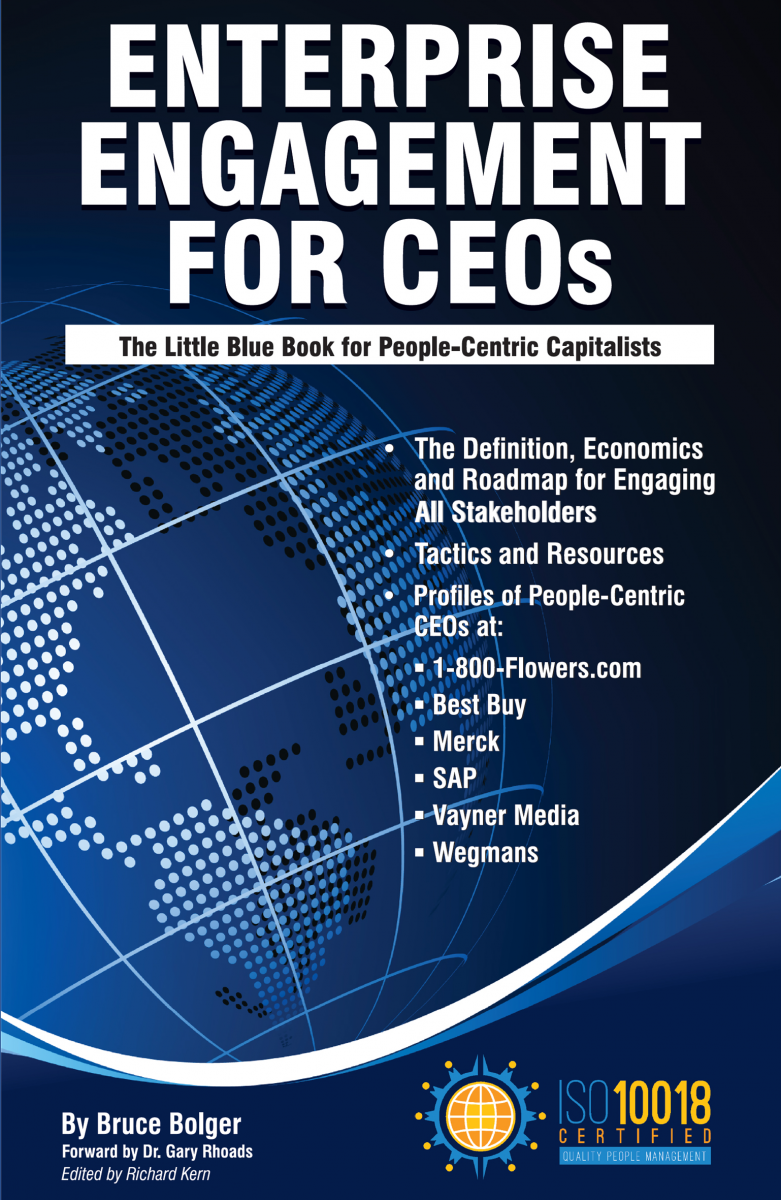
The EEA offers a complimentary course syllabus for educators.
In Print:
This is the definitive implementation guide to Stakeholder Capitalism, written specifically to provide CEOs and their leadership teams a concise overview of the framework, economics, and implementation process of a CEO-led strategic and systematic approach to achieving success through people. (123 pages, $15.99)
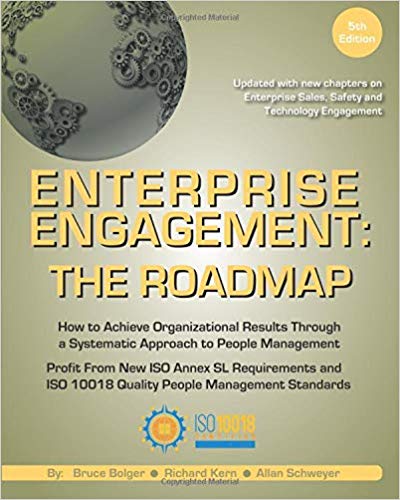
The first and most comprehensive book on Enterprise Engagement and the new ISO 9001 and ISO 10018 quality people management standards. Includes 36 chapters detailing how to better integrate and align engagement efforts across the enterprise. (312 pages, $36.)
Online:
10-minute short course: click here for a 10-minute introduction to Enterprise Engagement and ISO standards from the Coggno.com learning platform.
Services:
• The Engagement Agency at EngagementAgency.net, offering: complete support services for employers, solution providers, and technology firms seeking to profit from formal engagement practices for themselves or their clients, including Brand and Capability audits for solution providers to make sure their products and services are up to date.
• C-Suite Advisory Service—Education of boards, investors, and C-suite executives on the economics, framework, and implementation processes of Enterprise Engagement.
• Speakers Bureau—Select the right speaker on any aspect of engagement for your next event.
• Mergers and Acquisitions. The Engagement Agency’s Mergers and Acquisition group is aware of multiple companies seeking to purchase firms in the engagement field. Contact Michael Mazer in confidence if your company is potentially for sale at 303-320-3777.
Enterprise Engagement Benchmark Tools: The Enterprise Engagement Alliance offers three tools to help organizations profit from Engagement. Click here to access the tools.
• ROI of Engagement Calculator. Use this tool to determine the potential return-on-investment of an engagement strategy.
• EE Benchmark Indicator. Confidentially benchmark your organization’s Enterprise Engagement practices against organizations and best practices.
• Compare Your Company’s Level of Engagement. Quickly compare your organization’s level of engagement to those of others based on the same criteria as the EEA’s Engaged Company Stock Index.
• Gauge Your Personal Level of Engagement. This survey, donated by Horsepower, enables individuals to gauge their own personal levels of engagement.
For more information, contact Bruce Bolger at Bolger@TheEEA.org, 914-591-7600, ext. 230.






